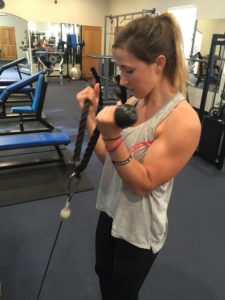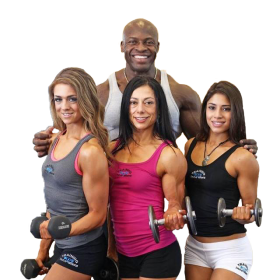Two Supplements You’re Probably Not Taking to Maximize Muscle Recovery!!!
Two Supplements You’re Probably Not Taking to Maximize Muscle Recovery!!!
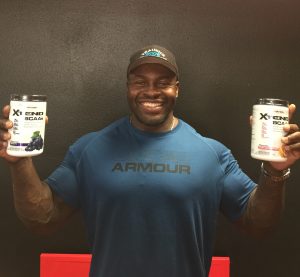 What supplements do I need to take to get the most out of my workouts? What can I take for optimal muscle recovery? Many of my personal training clients want to know what supplements to take and when to take them. With all the supplement companies trying to sell their latest and greatest products, this could be a bit overwhelming not to mention a bit taxing on your bank account. Many of the nutrients required for building muscle and muscle recovery should come from the foods that you consume throughout the day. However, if you are going to take any supplements at all, these are the two I highly recommend.
What supplements do I need to take to get the most out of my workouts? What can I take for optimal muscle recovery? Many of my personal training clients want to know what supplements to take and when to take them. With all the supplement companies trying to sell their latest and greatest products, this could be a bit overwhelming not to mention a bit taxing on your bank account. Many of the nutrients required for building muscle and muscle recovery should come from the foods that you consume throughout the day. However, if you are going to take any supplements at all, these are the two I highly recommend.
L-Glutamine: Glutamine is the most common amino acid found in your muscles. Glutamine plays key roles in protein metabolism, volumizing muscular cells, and anti-catabolism. As a matter of fact, over 61percent of skeletal muscle is Glutamine. Glutamine consists of 19 percent nitrogen, which makes it the primary transporter of nitrogen into your muscle cells. Glutamine also increases your ability to secrete the human growth hormone, which helps metabolize body fat and support new muscle growth. During intense weight training, Glutamine levels are greatly depleted, which decreases strength, stamina and muscle recovery. Without L-Glutamine supplementation, it could take up to 6 days for Glutamine levels to return to normal. Glutamine also plays a key role in protein synthesis. Therefore, I recommend L-Glutamine supplementation because it is so important, not necessarily to gain more muscle, but for the maintenance effects.
2. BCAA’s: BCAA’s include the amino acids leucine, isoleucine and valine. BCAA’s, particularly leucine helps support muscle protein synthesis and aid in muscle growth and recovery. BCAA’S are found in high protein foods such as salmon, chicken, salmon, eggs, and beef. However, I recommend that my personal training clients take a BCAA supplement. This is beneficial for my athletes due to the fact that free form BCAA’s bypass the liver and are absorbed directly into the bloodstream. BCAA’s have a branched side chain that simplifies the task of converting each amino acid into energy during intense training sessions. They make up approximately 35 percent of all muscle tissue. The more BCAA’s the body contains, the more they will be used for energy, slowing down the breakdown of muscle cells and preventing muscle atrophy.
For more information on supplement consumption, increasing muscle mass, improving your physique, or if you’re frustrated with your current level of fitness and looking to hire a personal trainer, contact us.
4 Exercises For Stronger Quads
4 Exercises For Stronger Quads
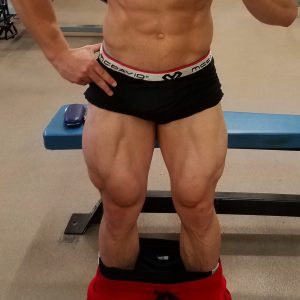 Leg day is probably one of the most important days of your workout regimen. It is also a day that is dreaded by many of my personal training clients and unfortunately all too many skip out on leg day. This is the perfect way to build a horrifying imbalance between the upper and lower body, completely throwing off the symmetry of one’s physique. Incorporating these 4 exercises into your leg day will work those quads and give you the strong, muscular legs you’re looking for. Once you see the results, you will continue this journey without looking for excuses.
Leg day is probably one of the most important days of your workout regimen. It is also a day that is dreaded by many of my personal training clients and unfortunately all too many skip out on leg day. This is the perfect way to build a horrifying imbalance between the upper and lower body, completely throwing off the symmetry of one’s physique. Incorporating these 4 exercises into your leg day will work those quads and give you the strong, muscular legs you’re looking for. Once you see the results, you will continue this journey without looking for excuses.
1. Barbell Squats: Begin with the barbell supported on your trapezius muscles, keep chest up and abs tight. Adopt a shoulder-width stance with the feet slightly turned outward. Descend by pushing hips back as much as possible. This may require your knees to travel forward. Ensure that they stay aligned with the feet preventing them from extending out past your toes. The goal is to keep the abs tight and the torso upright. Continue all the way down, keeping the weight evenly distributed through your feet. At the moment the upper legs form a 90-degree angle, push up through the legs reversing the motion, driving the weight upward. This is one rep; continue until legs reach fatigue.
2. Leg Press: Lay down in the machine and place your legs on the platform directly in front of you, shoulder width apart. Lower the safety bar holding the weighted platform in place and press the platform up extending your legs but keeping a soft knee. Ensure that you do not lock your knees. As you inhale, slowly lower the platform until your upper and lower legs make a 90-degree angle. Push through your heels using your quads to take you back to the starting position as you exhale. Repeat this movement until your legs reach fatigue.
3. Dumbbell Lunges: Standing upright, hold two dumbbells in your hands by your sides, step forward with your right leg approximately 2 feet from the left foot keeping it stationary behind you. Inhale while lowering your upper body and bending your knees. Prevent stress to your knee joints by ensuring your knee does not extend past your toes and keep the front of your shin perpendicular to the ground. Keep your abs tight and maintain balance. Push up through the heel of your foot and go back to the starting position as you exhale. Repeat the movement until you reach fatigue and then repeat with the left leg.
4. Leg Extensions: After adjusting the weight to fit your needs, adjust the pad so it falls on top of your ankles. Sit on the machine with your ankles under the pad and feet pointed forward. This will be your starting position. Your legs should form a 90-degree angle between the lower and upper leg to avoid creating undue stress at the knee joint. Using your quads, extend your legs, tensing your quads at the top of the movement and exhale. Slowly lower the weight back to the original position as you inhale. Again, repeat until you reach fatigue.
In order for the legs to grow it is necessary to push past the burn. They will burn long before they are completely fatigued, so you should push past that point in order to reach those goals and build those legs! For more information on building stronger quads, increasing muscle mass, improving your physique, or if you’re frustrated with your current level of fitness and looking to hire a personal trainer, contact us.
Do You Need A Personal Trainer?
Do You Need A Personal Trainer?
Are You Frustrated With Your Results?
*Have you lost your motivation? *Has your weight loss come to a halt? *Carrying too much body fat? *Repeatedly doing the same workout each time you go to the gym? *Putting in the work but not seeing the results you expect? *Are you lacking a meal plan that is going to provide you with the nutrients you need to meet those fitness goals? *Do you have a specific fitness goal in mind but not sure where to start or how to get there?
You Need An Individualized Program
If you answered yes to any of these questions, there is no better time to get started!! A personal trainer can provide effective workouts that are specific for you and your individual needs and fitness goals. Every “body” is different and when you go to the gym, you do not have the same fitness goals as the person working out next to you. Therefore, why would you take the same approach or better yet, do the same exercise?
Hiring a personal trainer will ensure you reach your goals, and provide consistent, non-judgmental fitness support. It will also help to prevent injuries that may occur from improper form or overtraining. Working out with a personal trainer increases your fitness-goal success rate as the influence of direct supervision during workouts has a huge effect on the outcome of your training. Personal training provides you with an individualized program and holds you accountable to it, which in turn, produces specific results.
Stop Wasting Time and Effort
As I consult with potential clients, I often refer to this analogy, would you travel to a new city or a foreign country without seeking out the expertise of a tour guide? A knowledgeable guide can give a laser focus to any sightseeing visit, and this may never be so valuable as when you have very little time in one place. Same thing applies in the gym. You should not be spending hours on end in the gym. The goal is to get the most effective workout in the shortest amount time, lasting no longer than an hour.
Training with a skilled professional will show you exercises that are designed specifically for you to target those problem areas, reach those personal fitness goals and meet your individual needs. Just like the professional tour guide can give you a customized and thrilling blitz through the destination of your choice, the skilled personal trainer can give you a personalized workout and nutrition management to utilize through your fitness journey that will lead you to the destination of success!!!
Spring is here so why wait?? There is not a better time to get started! If you want to see results and make that change in your physique, you are looking in the right place. If you need a personal trainer that will help you reach your fitness goals, contact us.
Can Being Good On Your Diet 100% of The Time Be Bad???
Can Being Good On Your Diet 100% of The Time Be Bad???
 Cheat meals are a debated subject and feared by many in the fitness community. When my personal training clients come to me they often need to be educated on the importance of cheat meals and the positive impact they will have on their fitness goals. Depending on the individual goals of my clients, a cheat meal is in the prescription for an efficient working metabolism. I can always tell when my clients skip their prescribed cheat. You see there is a method to this madness, leptin the hormone responsible for regulating hunger and energy expenditure, becomes elevated during a cheat meal. What does this mean?
Cheat meals are a debated subject and feared by many in the fitness community. When my personal training clients come to me they often need to be educated on the importance of cheat meals and the positive impact they will have on their fitness goals. Depending on the individual goals of my clients, a cheat meal is in the prescription for an efficient working metabolism. I can always tell when my clients skip their prescribed cheat. You see there is a method to this madness, leptin the hormone responsible for regulating hunger and energy expenditure, becomes elevated during a cheat meal. What does this mean?
Boost Your Metabolism With A Cheat Meal!!
Increased leptin levels help us to reduce body fat more efficiently. Following your diet and eating clean 100% of the time results in a drop of ones leptin levels. Due to the fact that primarily body fat synthesizes this hormone, the body will panic, refusing to give up energy in starvation mode. The result is a slowed metabolism and fat loss will come to a halt with these lowered leptin levels. The remedy I utilize to kick up leptin levels is an increase in calories. This will boost the metabolism and results in weight loss. A cheat meal is a solution to heighten leptin hormone and enjoy foods not typically on your meal plan.
Having A Cheat Meal Prevents Fitness Failure!!
Eating clean and following a healthy meal plan 90 percent of the time and allowing for 10 percent splurges during the week would be considered a strict eat clean strategy but still allows for some indulgence. Doing so has both physiological and emotional health benefits. Cheat meals are designed to promote a positive diet outlook, stave off cravings, and keep you on track with overall health and fitness goals because it prevents you from feeling deprived.
How To Incorporate A Cheat Meal!!
Now that you know the benefits of a cheat, remember it doesn’t mean a free ticket to gorge on everything in sight. The goal is to spike leptin levels and boost metabolism not to derail your hard work and progress you’ve worked hard all week to achieve. Trudging through the week on reduced calories takes a toll on the body and what you want to avoid is allowing your body to adjust completely to the lower calorie lifestyle. To sum it all up, refueling with a cheat meal has been found as a positive benefit to reach and maintain your fitness goals. Now just remember to cheat smart, keep the leptin levels normal and metabolism boosted, this is key to maintaining a fit body.
For more information on how to incorporate a cheat meal to reach those personal fitness goals, or if you’re frustrated with your current level of fitness and thinking about hiring a personal trainer, contact us.
Has Your Weight Loss Come to a Halt?
Has Your Weight Loss Come to a Halt?
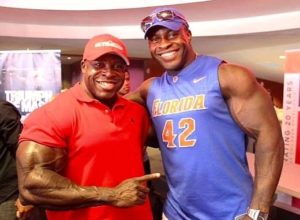 Whether you are aiming to loose that extra layer of fat for a fitness competition, an upcoming vacation, a special event, or swim suit season, the approach you take can have a negative impact on your metabolism. You start with aggressive cuts to caloric intake consuming only half of what you are used to eating. You add an hour of cardio per day to your already exhausting exercise program. Great job, you have lost several pounds over the first few weeks until it all comes to a halt!! No more of that extra layer of fat seems to be shedding, the scale is not budging and pure frustration has now set in. Desperation comes in to play. Therefore, you proceed by cutting carbs and even tapering down the healthy fats from your diet. Maybe even a little extra cardio to boot. Very little changes if any are happening with your weight and overall body composition. The body has stopped responding to your efforts altogether. What the heck happened?
Whether you are aiming to loose that extra layer of fat for a fitness competition, an upcoming vacation, a special event, or swim suit season, the approach you take can have a negative impact on your metabolism. You start with aggressive cuts to caloric intake consuming only half of what you are used to eating. You add an hour of cardio per day to your already exhausting exercise program. Great job, you have lost several pounds over the first few weeks until it all comes to a halt!! No more of that extra layer of fat seems to be shedding, the scale is not budging and pure frustration has now set in. Desperation comes in to play. Therefore, you proceed by cutting carbs and even tapering down the healthy fats from your diet. Maybe even a little extra cardio to boot. Very little changes if any are happening with your weight and overall body composition. The body has stopped responding to your efforts altogether. What the heck happened?
I’ll tell you what happened!!! The body said “enough” that’s what happened. You created a metabolic meltdown by causing a drastic slowing of your metabolism through excessive caloric restriction, excessive amounts of cardio and unnecessary stress on the body. The body is a surviving machine and adapts to what we do to it. A cascade of events unfolds when the body senses fat loss and struggles to stay balanced (homeostasis). The body is simply fighting for survival and will do what it takes to make that happen. You make a change and the body will respond with an adjustment. The bottom line, the end result to this catastrophe is loss of muscle and holding of whatever fat is left to cling to. The metabolism will shut down altogether. What now??? Can this be fixed?
Why of course it can, and it can be a quick easy fix if you come and seek the expertise of a professional like us here at Training Innovations!! Working with us, you will develop an understanding of how the body works and how to implement safe fat loss strategies before the damage is done. I find that when many of my personal training clients first come to me, they are unaware of how the metabolism works and how every body is different, which requires a different approach. Together we will reduce the risk of muscle loss and allow your body to adjust slowly to applied changes. We will begin by making changes to your caloric intake, keeping carbs in your diet and not overdoing cardio sessions. For more information on an individualized plan that will fit your body type and help you reach those personal fitness goals, or if you’re frustrated with your current level of fitness and thinking about hiring a personal trainer, contact us.
4 Reasons For Your Unsuccessful Weight Loss!!!!
4 Reasons For Your Unsuccessful Weight Loss!!!!
 “Korbie, I’m choosing healthy foods, I’m exercising and getting my cardio in, I’ve eliminated my late-night snacking, but I’m not losing weight!!! The number on the scale isn’t budging.” These are some things I’ve heard from personal training clients in the past. This diet head-scratcher happens to the best of us, which is why many of my clients came to me. Read on to see if any of these 4 situations is impeding your weight loss progress.
“Korbie, I’m choosing healthy foods, I’m exercising and getting my cardio in, I’ve eliminated my late-night snacking, but I’m not losing weight!!! The number on the scale isn’t budging.” These are some things I’ve heard from personal training clients in the past. This diet head-scratcher happens to the best of us, which is why many of my clients came to me. Read on to see if any of these 4 situations is impeding your weight loss progress.
- Overlooked Calories!!
What they fail to see is that even healthy food selections contain calories. Choosing nutritious foods is a start, but just because they’re healthy doesn’t mean you can eat unlimited amounts and expect to drop those unwanted pounds. Weight loss is primarily a play with numbers. It all boils down to calories in versus calories out. Depending on your body type and fitness goals, the numbers differ for every “body”.
- Overcompensation!!
Be proud of yourself, you’ve done cardio everyday this week! You haven’t missed one training session!! However, this does not entitle you to a free eating pass. All to often there is a miscalculation of how many calories you’re actually burning during exercise. Your calorie counter on your cardio machine or sports watch may indicate that you torched 500 calories during your last sweat session, but every person is different. There are a number of factors that play in to the real number of calories you burn during exercise.
- Portion Distortion!!
Definitely heard this before, multiple times, but it does bear repeating. It’s all about portion control! Sure, that cereal box says 110 calories, per serving that is. How much are you routinely pouring into your giant-size mixing bowl? Read labels carefully and remember it’s a serving so measure out your portions.
- Dining Out (Even if you’re ordering from the healthier alternatives)
Who doesn’t love a good restaurant meal, but here’s the issue: You never know exactly what’s in your meal or how exactly it was prepared. Even if the restaurant provides nutrition facts, those are simply estimates. Do you really think every member of the kitchen crew is weighing and measuring each ingredient? Now, it’s ok to dine out on occasion, especially if you ask questions and make smart choices and special requests.
For more information on why you may not be losing weight, managing your diet and calories to meet your individual needs or if you’re frustrated with your current level of fitness and thinking about hiring a personal trainer, contact us.
Want To Lose Weight: Count Carbs, Sugar, Fat?
Want To Lose Weight: Count Carbs, Sugar, Fat?
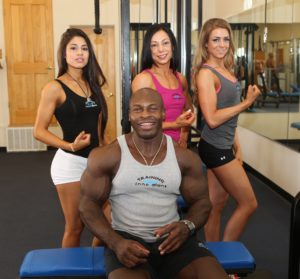 When it comes to fitness goals, losing weight is at the top of the list for many. Before coming to see me, many of my personal training clients are unsure about how to make this happen. There is lots of confusion about whether one should count calories, cut carbs, sugar or fat to drop weight. To get the answer that best fits your own personal goals, it may be helpful to seek out a professional who can use their expertise to develop an individualized plan just for you, someone like us here at Training Innovations!! Stating the obvious, to lose weight one must create a caloric deficit. We all know what this means: burn more calories than you consume. This is done through physical activity or consuming fewer calories throughout the day. Fats, sugars and other carbohydrates make up the total number of calories we consume, which means we should pay attention to these numbers as well.
When it comes to fitness goals, losing weight is at the top of the list for many. Before coming to see me, many of my personal training clients are unsure about how to make this happen. There is lots of confusion about whether one should count calories, cut carbs, sugar or fat to drop weight. To get the answer that best fits your own personal goals, it may be helpful to seek out a professional who can use their expertise to develop an individualized plan just for you, someone like us here at Training Innovations!! Stating the obvious, to lose weight one must create a caloric deficit. We all know what this means: burn more calories than you consume. This is done through physical activity or consuming fewer calories throughout the day. Fats, sugars and other carbohydrates make up the total number of calories we consume, which means we should pay attention to these numbers as well.
1. Get the Skinny on Fat! A single gram of fat provides nine calories of energy. A single gram of carbohydrate or protein only provides four calories. If you eat foods high in fat, your total caloric intake can increase quickly because the calorie cost is so high. However, a well balanced diet and depending on your fitness goals, eating a reasonable amount of healthy fat may be beneficial for your diet.
Fat helps you to feel full and satiated for a longer period of time. For that reason, foods that contain healthy fats such as eggs, fish, nuts, or avocado can be a smart addition to your meal plan.
2. Is Sugar The Enemy? Sugar itself isn’t necessarily bad for you if it’s not consumed in large amounts. It should be consumed sparingly and not make up most of our diet. Many Americans consume too much sugar and aren’t even aware of it. Sugar is added to many processed foods or condiments that we pile on. Ketchup, salsa or salad dressings may contain added sugar even though they don’t taste sweet. Now don’t forget about those sugary drinks, many are loaded with sugar. Reduce your sugar intake and in turn you reduce your total caloric intake and the end result may be a drop in your weight.
3. Is Cutting the Carbs The Answer? Carbohydrates, at four calories per gram, are a good source of energy for your body. However, there are good carbs and bad carbs. Overindulging in refined carbs is very easy to do and that can drive your caloric count through the roof. Counting carbs to lose weight is a science. The carbs you keep in your diet should be full of vitamins and minerals that will fuel your body and provide you with the energy you need to meet those fitness goals.
For more information on managing your diet with the proper amounts of fats, carbs, and calories to meet your individual needs or if you’re frustrated with your current level of fitness and thinking about hiring a personal trainer, contact us.
Workout Recovery!!!
Workout Recovery!!!
If you’re doing any sort of exercise on a regular basis, you must keep muscles and fascia healthy and mobile. Spending a little one-on-one time with a foam roller and utilizing this tool can improve mobility. Increasing mobility can improve athletic performance and will help avoid injury by keeping us fast, nimble and agile. However, knowing how to use that cylindrical tool can be a little confusing and yes, there is more to it than just rolling.
Why Foam Rolling Is Good For Your Muscles…
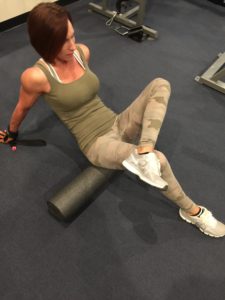 My personal training clients often ask me what they can do between workouts to help decrease the amount of workout soreness. My response to them is always, foam rolling. Foam rolling is a form of self-myofascial release, or self-massage. It helps remove adhesions in your muscles and connective tissue. It increases blood flow to your muscles resulting in better mobility with enhanced circulation. Resulting in improved performance and aided recovery.
My personal training clients often ask me what they can do between workouts to help decrease the amount of workout soreness. My response to them is always, foam rolling. Foam rolling is a form of self-myofascial release, or self-massage. It helps remove adhesions in your muscles and connective tissue. It increases blood flow to your muscles resulting in better mobility with enhanced circulation. Resulting in improved performance and aided recovery.
How Do You Roll?
When foam rolling, roll along the entire length of the tissue that you are treating. For longer muscles like the quadriceps and adductors, performing longer, sweeping strokes is more effective than stopping completely over a tender spot. For smaller muscle groups like the calves and glutes, focus on short back-and-forth motions. To assist with recovery of a sore muscle, pressure should be applied on trigger points or knots, areas of increased muscle density. The idea is to apply pressure to injury-prone areas such as hip rotators and the gluteus medius. When you hit a tender spot, roll slowly over it. The tenderness should decrease with regular foam rolling. After locating the trigger point, stop and apply pressure on that spot for 20–30 seconds then roll through.
Remember to listen to your body and think about what needs attention, if you’re feeling a little sore or tight that’s an indication that you might want to spend time with the foam roller and treat those areas that are calling for much needed attention. Give your body what it needs, listen and it will tell you. In the end, foam rolling can help make the time you spend training more efficient and effective. For more information and specific exercises you can do with a foam roller to assist in muscle recovery, or if you’re looking to improve your health, lose weight, build strength, or if you’re frustrated with your current level of fitness and looking to hire a personal trainer, contact us.
4 Tips To Eating Healthy While Eating Out!!!
4 Tips To Eating Healthy While Eating Out!!!
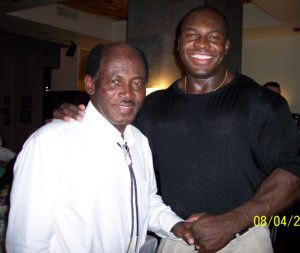 Many of my personal training clients ask me how they can still enjoy the occasional social outing without completely destroying their hard work they’ve put in all week. Eating out at a restaurant doesn’t have to sabotage your diet! Use smart-eating strategies: Plan ahead, consider the menu and study it, and choose foods carefully. Be deliberate when ordering your meal!
Many of my personal training clients ask me how they can still enjoy the occasional social outing without completely destroying their hard work they’ve put in all week. Eating out at a restaurant doesn’t have to sabotage your diet! Use smart-eating strategies: Plan ahead, consider the menu and study it, and choose foods carefully. Be deliberate when ordering your meal!
- Choose Protein Wisely!!
Lean sources of protein that are broiled, poached, grilled, baked, or steamed tend to be lower in fat than those that are fried. You can’t go wrong with salmon, tilapia, sirloin, or chicken. Avoid those protein sources that are breaded or that come with cream sauce or gravy.
- Skip The Bread and Head Straight For The Salad!!!
Many restaurants start your meal with a basket of bread. Don’t do it, politely decline!!! Instead look for freshly made salads and healthy greens that provide you with that much needed fiber and other nutrients that aid in digestion. Ask for dressing on the side so you can control the portion size. Choose reduced-fat salad dressings. Or choose oil-and-vinegar salad dressings instead of creamy dressings that are packed with fat.
- Keep Your Meal Balanced!
Choose the complex carbohydrates that contain vitamins, minerals and antioxidants. Brown rice, quinoa, potatoes, beans, peas and lentils are examples of complex carbs. Avoid those sides that can quickly send calories soaring including fries, chips, rice, noodles, onion rings, coleslaw, macaroni and cheese, and mashed potatoes. Opt for baked potato and boost its nutritional value by topping it with vegetables, chili, or salsa. Even better, have a baked sweet potato and add cinnamon only, skip the butter!!!!
- Don’t Drink Your Calories!!
Sodas and alcoholic beverages are a huge source of hidden sugar and calories. The average large soda packs around 300 calories. Stick to diet soda or iced tea and don’t be fooled by lemonade and fruit drinks, which add calories and sugar without much in the way of nutrients.
Many restaurants honor requests, so don’t be afraid to be assertive, ask menu questions regarding food preparation methods and make special requests to meet your nutritional needs. Remember it’s YOUR body so be picky!! For more information on making wise choices while eating out, nutrition and health, or if you’re frustrated with your level of fitness and have been thinking about hiring a personal trainer, contact us.
Alternative Protein Sources!
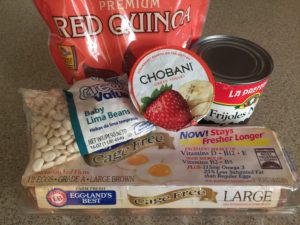 Along with fat and carbohydrates, protein is considered a macronutrient which means we have to consume adequate amounts to stay healthy. Protein is essential to our existence. Hair, skin and muscle are primarily derived from protein. Protein is often associated with weight training and building lean muscle, however a balanced diet adequate in protein can also help us maintain a healthy weight, build and repair muscle tissue, and curb our appetite. Depending on your fitness goals, the amount of protein you should consume may vary. Now, if you are one of those who has a protein deficient diet due to the fact that you don’t like meat, not to worry. Here are 6 meatless protein sources you may incorporate into your diet.
Along with fat and carbohydrates, protein is considered a macronutrient which means we have to consume adequate amounts to stay healthy. Protein is essential to our existence. Hair, skin and muscle are primarily derived from protein. Protein is often associated with weight training and building lean muscle, however a balanced diet adequate in protein can also help us maintain a healthy weight, build and repair muscle tissue, and curb our appetite. Depending on your fitness goals, the amount of protein you should consume may vary. Now, if you are one of those who has a protein deficient diet due to the fact that you don’t like meat, not to worry. Here are 6 meatless protein sources you may incorporate into your diet.
1. Eggs
A single hard-boiled egg with the yolk will provide you with 6 grams (g) of protein. Not only are eggs an incredible source of protein, but they also contain several B vitamins responsible for energy, including B6, B12, thiamin, riboflavin, and folate. The all-natural, high-quality protein found in eggs is often used as the benchmark for evaluating the protein quality of other foods. Although it is true that eggs are high in cholesterol, they are only high in HDL “good” cholesterol and do not have an unhealthy impact on our cholesterol levels.
2. Greek Yogurt
You can’t go wrong with a serving of Greek yogurt, which can contain up to 20g of protein. While Greek yogurt is packed with almost double the amount of protein as regular yogurt, it also contains fewer carbohydrates. Greek yogurt is also recommended as a substitute for other dairy products such as sour cream, cheese, and ice cream thanks to its low-fat content. You can also make your tuna or chicken salad healthier by substituting mayonnaise for Greek yogurt.
3. Nuts
Almonds, pistachios, walnuts, peanuts, and cashews are packed with all three macronutrients on top of essential micronutrients such as vitamin E, vitamin B6, magnesium, phosphorus, zinc, and potassium. The protein count for each type of nut includes 5.9g for 22 unsalted almonds, 5.9g for 49 unsalted pistachios, 4.3g for 14 walnut halves, 6.7g for 35 unsalted peanuts, and 4.3g for 18 cashew halves.
4. Chia Seeds
As tiny as it is, this tiny super-food is packed with omega-3 fatty acids, fiber, antioxidants, and, of course, protein. An ounce of chia seeds contains 4g of high quality protein, 12g of carbohydrates (11 of which are fiber), and 9g of fat (5 of which are Omega-3s).
5. Lentils
Vegetarians rely on beans as a major source of protein for their meatless diet, and for good reason. Similar to nuts, protein can be found in a variety of different bean choices, including soybeans (28.5g of protein per cup), kidney beans (15g of protein per cup), black beans (15g of protein per cup), pinto beans (15.5g of protein per cup), and lima beans (14.5g of protein per cup).
6. Quinoa
A single cup of quinoa is packed with around 24g of protein. It is also considered a complete protein, which means it contains all nine essential amino acids that have to come from food, since they are not naturally produced by the body.
For more information on losing fat, building muscle, nutrition and health, or if you’re frustrated with your level of fitness and have been thinking about hiring a personal trainer, contact us.

